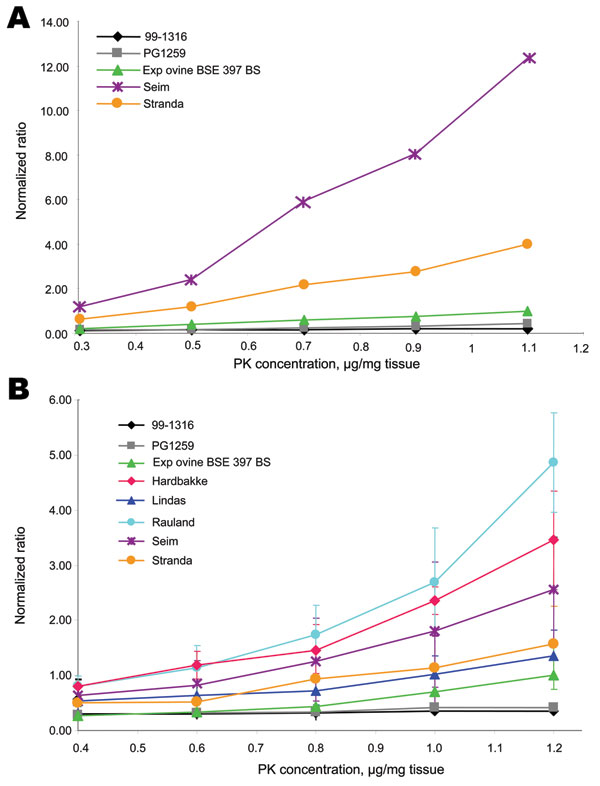Volume 14, Number 4—April 2008
Research
Rapid Typing of Transmissible Spongiform Encephalopathy Strains with Differential ELISA
Figure 6

Figure 6. Proteinase K (PK) sensitivity of Nor98 isolates in stringent and mild detergent conditions. The ELISA typing test was performed on Nor98 isolates, with 5 concentrations (0.4–1.1 µg per mg of tissue) in the stringent A′reagent (A) or in the mild A′′ reagent, adapted for PK-sensitive strains (B) (see Experimental Procedures). A/A′(or A/A′′) ratios were calculated for each PK concentration, and normalized by dividing by the A/A′ratio (or A/A′′) obtained for the experimental ovine bovine spongiform encephalopathy (BSE) sample at the maximal PK concentration. In the A’ reagent, even at the lowest PK concentration (PK 0.4 μg/mg tissue), the normalized ratios (using the experimental ovine BSE A/A′PK1.1 ratio) obtained for the Nor98 isolates are >1, thus being 3× more sensitive than experimental ovine BSE. To evaluate possible differences in PK sensitivity among Nor98 isolates, this experiment was reproduced with the A′′ reagent (panel B), which is 3- to 6-fold more protective than the A′reagent, as shown by the corresponding normalized ratios (A′or A′′ reagent) for the same PK concentration (1.1 μg PK/mg of tissue).